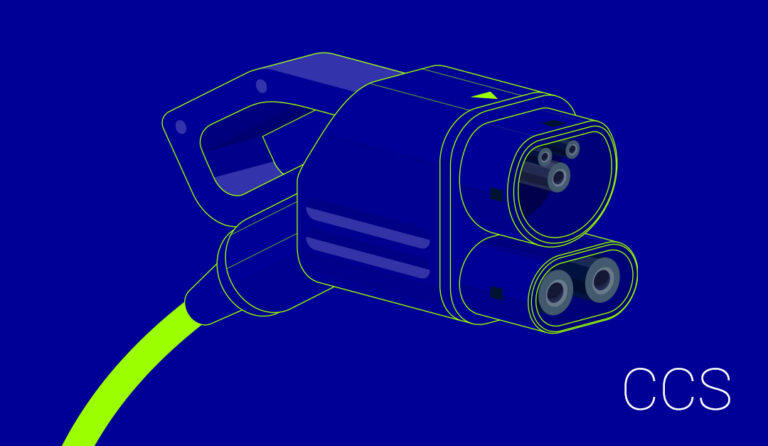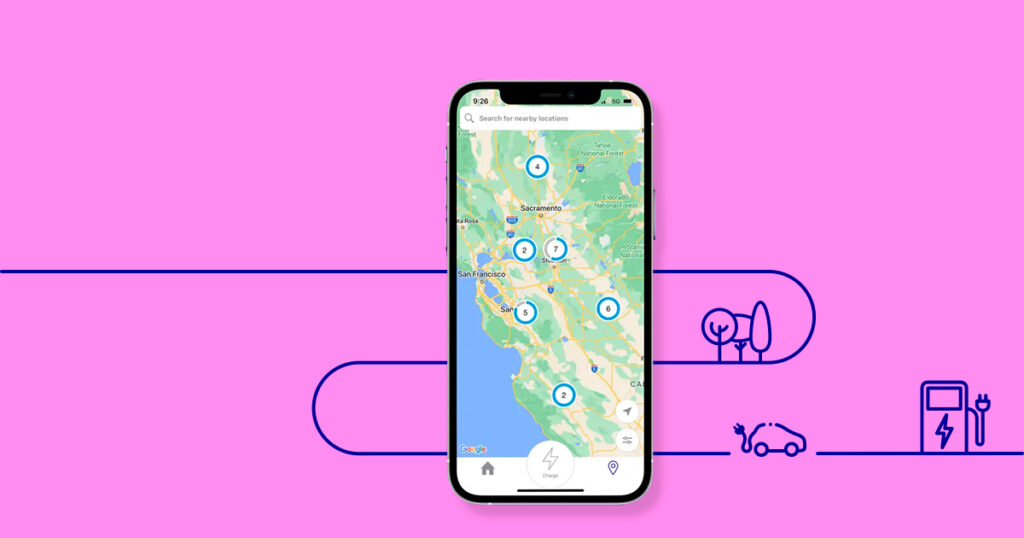EV 101
Know before you charge: Types of EV charging ports
EVs are gaining traction across the US, and core to that growth is EV charging infrastructure. As more people and fleets go electric, charging hardware manufacturers and electric vehicle manufacturers are working together to create accessible charging experiences across EV models.
The tech
CCS port
The Combined Charging System (CCS) Combo connector has had prominence as a versatile solution for EV charging. Combining the standard J1772 connector with two additional DC fast charging pins, the CCS Combo connector supports both AC and DC charging. This dual capability makes it a preferred choice for faster charging options at level 2 stations and DC fast charging stations.

North American Charging Standard (NACS) or SAE J3400
The NACS connector is the proprietary charging port of Tesla and is now the fastest growing connector for electric vehicle manufacturers. In November 2022, Tesla announced this NACS connector design to be open to charging network operators and vehicle manufacturers for use on their equipment. Since, many American-based and international electric vehicle manufacturers have expressed intention to design EVs with NACS compatible ports going forward. The NACS connector is being standardized as SAE J3400.

Tesla Magic Dock adapter
Magic Dock-equipped Superchargers are starting to roll out at various locations across the US. The Magic Dock equipment has built-in CCS adapters, making it possible for EV drivers with CCS ports to charge at these locations.
What it means for you
Identify your native charging type
The first step to make EV charging work for you is to identify what your vehicle’s native charging type is. You can either take a look at the charging port on the vehicle itself to see which charging port type it is, or you can simply find this information in your vehicle guidebook.
Assess which station offers which charging plug
Finding a compatible charging station seems daunting, but it’s actually quite simple. If you’re headed to a Tesla Magic Dock – you’re covered; it’s designed to be compatible with both CCS and NACS ports. If you’re headed to a charging station with only CCS chargers but your EV uses a NACS port, then you should ensure you have your CCS adapter with you, to allow for seamless charging. And vice versa. If you’re headed to a charging station with only NACS but your EV has a CCS port, you’ll want to be sure you have a NACS adapter with you.
Find a charging station that fits your vehicle
When using either the bp pulse interactive map, or the bp pulse app, you can click on a location of one of our public charging stations to view not only what plug types are available there, but how many connectors are available at that moment. All of our stations are CCS and NACS compatible, with some requiring an adapter to connect. Your adapter is your best friend when it comes to the world of EVs. Be sure to only use adapters that are approved by your electric vehicle manufacturer for use on your model.
Pro tip: Going on a trip? Keep in mind that even when borrowing or renting an EV, charging matters! When you check out an EV from a rental company, double check what type of charging port the vehicle has so you can navigate to the charging stations that have that vehicle’s charging plug.
*This article covers the most common EV charging sockets in the US, however there are more types of EV charging plugs. For more information, visit the US Department of Energy.
Go further

Find bp pulse public charging locations
We’re working to build out fast, reliable chargers in accessible locations across the country. Whether you’re commuting to work or driving coast to coast, we’re developing a national network that’s designed for you.
Date
6 March 2024
author

Zachary Peterson
Product Manager
bp pulse Americas
Topics


